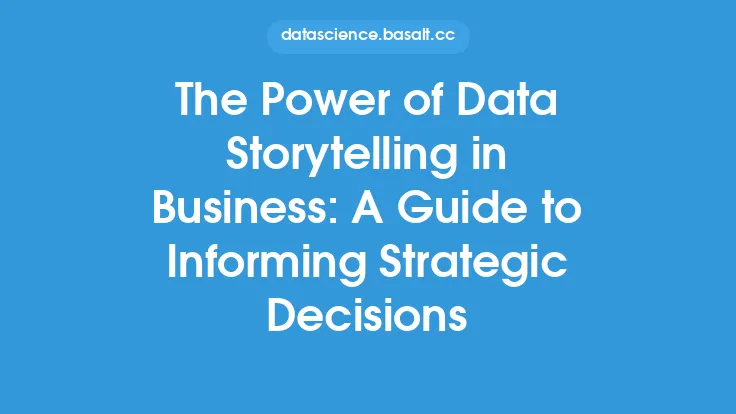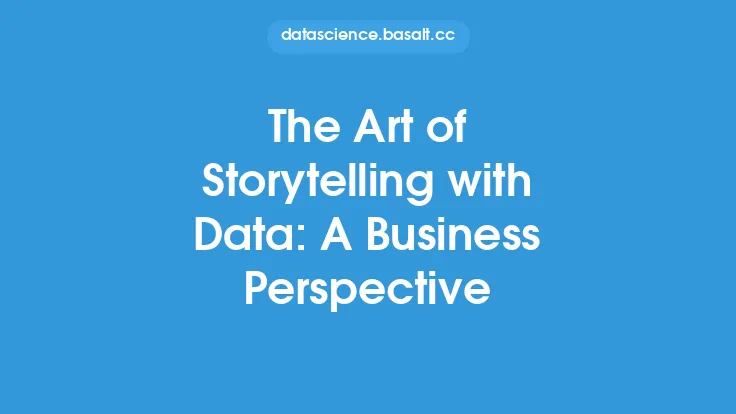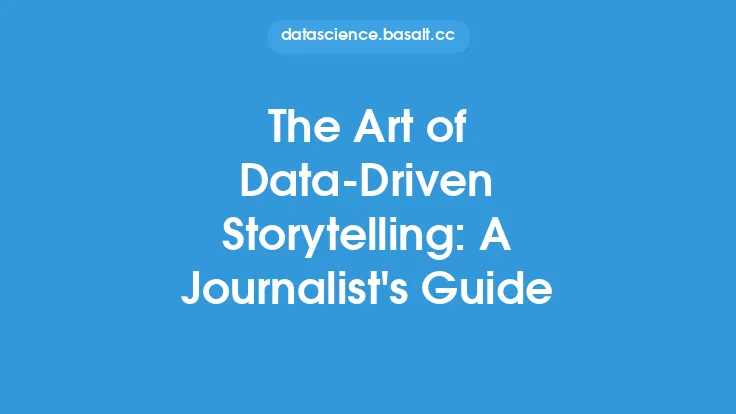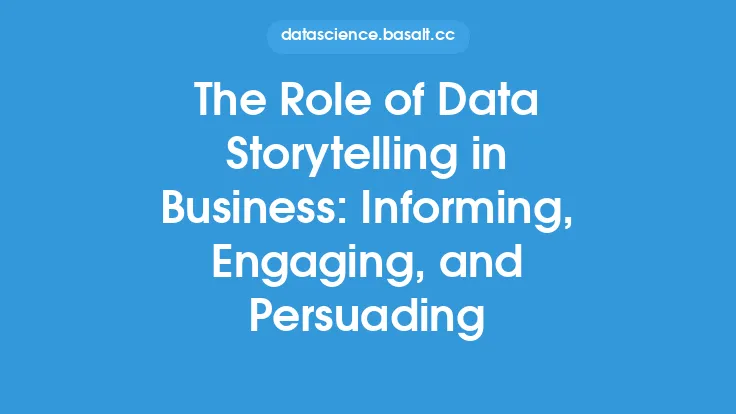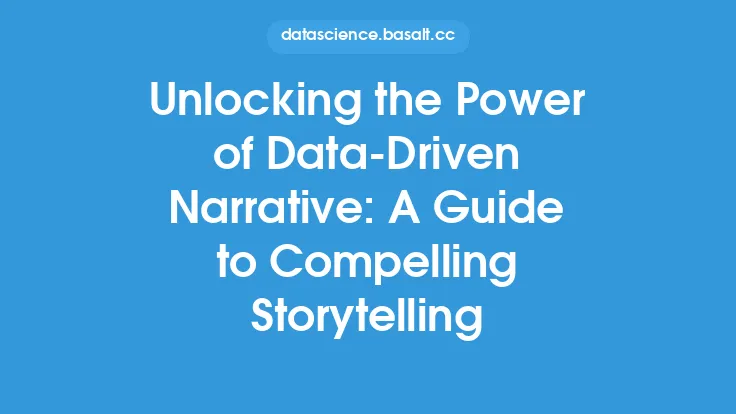In the realm of business intelligence, data is king. However, with the sheer volume of data available, it can be overwhelming to make sense of it all. This is where the art of storytelling comes in – a powerful tool that can help to extract insights, convey complex information, and drive business decisions. Storytelling in business intelligence is not just about presenting data in a visually appealing way, but about crafting a narrative that resonates with the audience and inspires action.
Introduction to Storytelling in Business Intelligence
Storytelling in business intelligence involves using data to tell a story that is both informative and engaging. It requires a deep understanding of the data, as well as the ability to communicate complex concepts in a simple and intuitive way. Effective storytelling in business intelligence can help to identify trends, patterns, and correlations that might otherwise go unnoticed. It can also facilitate collaboration and decision-making by providing a shared understanding of the data and its implications.
The Benefits of Storytelling in Business Intelligence
The benefits of storytelling in business intelligence are numerous. For one, it can help to increase engagement and participation among stakeholders. When data is presented in a narrative format, it is more likely to resonate with the audience and inspire action. Storytelling can also help to improve communication and collaboration among team members, by providing a shared language and framework for understanding the data. Additionally, storytelling can facilitate the identification of insights and trends that might otherwise go unnoticed, and can help to drive business decisions by providing a clear and compelling narrative.
The Key Elements of Storytelling in Business Intelligence
There are several key elements that are essential to effective storytelling in business intelligence. These include:
- A clear and concise narrative: The story should be easy to follow and understand, with a clear beginning, middle, and end.
- Relevant and timely data: The data should be up-to-date and relevant to the story being told.
- Visualizations and graphics: Visualizations and graphics can help to illustrate complex concepts and make the story more engaging.
- Interactivity: Interactivity can help to facilitate exploration and discovery, and can provide a more immersive experience for the audience.
- A clear call to action: The story should provide a clear call to action, and should inspire the audience to take action.
The Role of Data Visualization in Storytelling
Data visualization plays a critical role in storytelling in business intelligence. It can help to illustrate complex concepts and make the story more engaging, and can provide a clear and concise way to communicate insights and trends. There are many different types of data visualizations that can be used in storytelling, including charts, graphs, maps, and tables. The choice of visualization will depend on the nature of the data and the story being told, as well as the audience and the desired outcome.
Best Practices for Storytelling in Business Intelligence
There are several best practices that can help to ensure effective storytelling in business intelligence. These include:
- Keeping the story simple and concise: The story should be easy to follow and understand, with a clear beginning, middle, and end.
- Using relevant and timely data: The data should be up-to-date and relevant to the story being told.
- Providing context: The story should provide context and background information, to help the audience understand the data and its implications.
- Using visualizations and graphics: Visualizations and graphics can help to illustrate complex concepts and make the story more engaging.
- Encouraging interactivity: Interactivity can help to facilitate exploration and discovery, and can provide a more immersive experience for the audience.
Common Challenges and Pitfalls
There are several common challenges and pitfalls that can arise when storytelling in business intelligence. These include:
- Information overload: With the sheer volume of data available, it can be overwhelming to make sense of it all.
- Lack of clarity: The story should be clear and concise, with a well-defined narrative and a clear call to action.
- Insufficient context: The story should provide context and background information, to help the audience understand the data and its implications.
- Ineffective visualizations: The visualizations and graphics should be effective in communicating the insights and trends, and should not be overwhelming or confusing.
The Future of Storytelling in Business Intelligence
The future of storytelling in business intelligence is exciting and rapidly evolving. With the increasing availability of data and the development of new technologies, such as artificial intelligence and machine learning, the possibilities for storytelling in business intelligence are endless. We can expect to see more interactive and immersive experiences, with the use of virtual and augmented reality, and more personalized and dynamic storytelling, with the use of real-time data and analytics.
Conclusion
In conclusion, storytelling in business intelligence is a powerful tool that can help to extract insights, convey complex information, and drive business decisions. By using data to tell a story that is both informative and engaging, businesses can increase engagement and participation among stakeholders, improve communication and collaboration, and facilitate the identification of insights and trends. By following best practices and avoiding common challenges and pitfalls, businesses can create effective stories that inspire action and drive business success. As the field of business intelligence continues to evolve, we can expect to see more innovative and effective storytelling, with the use of new technologies and techniques.
